Special Regulation Signs
- 1/36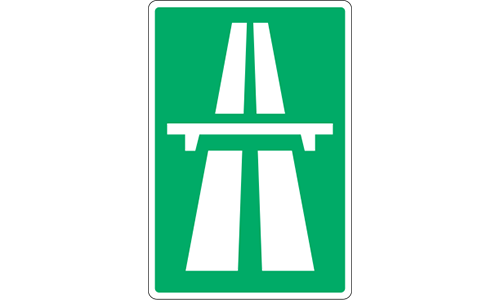
This sign indicates that you are entering a motorway. Motorways have specific regulations, typically including higher speed limits, restrictions on certain types of vehicles, and no pedestrian or bicycle access, ensuring high-speed, uninterrupted traffic flow.

This sign indicates that you are entering an expressway. Expressways are typically high-speed roads with limited access, designed for efficient through-traffic, and may have different regulations from motorways depending on the jurisdiction.

This sign marks the end of a motorway. Upon passing this sign, the specific rules and regulations applicable to motorways no longer apply, and drivers will be subject to the rules of the road they are transitioning to, which might include lower speed limits or different traffic conditions.
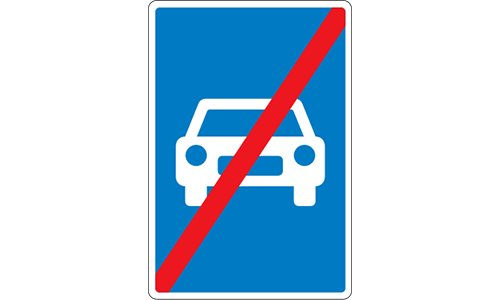
This sign indicates the end of an expressway. Drivers should be aware that the specific rules and characteristics of an expressway no longer apply, and they should adjust their driving to the new road conditions and general traffic regulations.
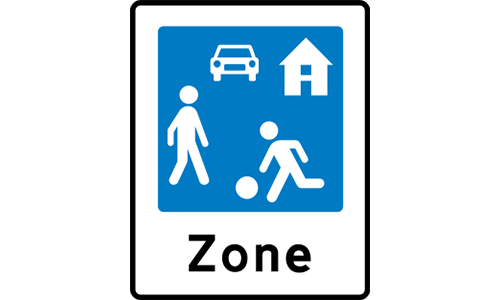
This sign indicates the beginning of a living street, often known as a shared space or play street. In such areas, pedestrians typically have priority over vehicles, play is permitted, and vehicles must drive at walking pace, exercising extreme caution due to the presence of various road users.

This sign marks the end of a living street. The special rules for shared spaces, such as pedestrian priority and walking-pace vehicle speeds, no longer apply, and general road rules and speed limits resume for the upcoming road section.
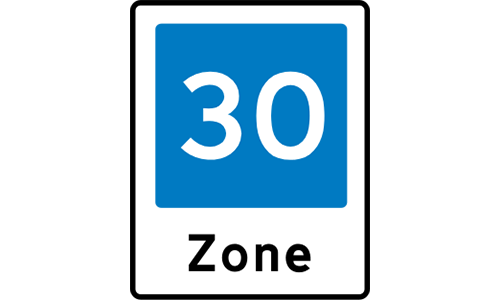
This sign indicates the beginning of a zone with traffic calming measures. Drivers should expect various features designed to reduce vehicle speed, such as speed bumps, chicanes, or narrowed roads, implemented to enhance safety for pedestrians and cyclists, and improve residential quality.
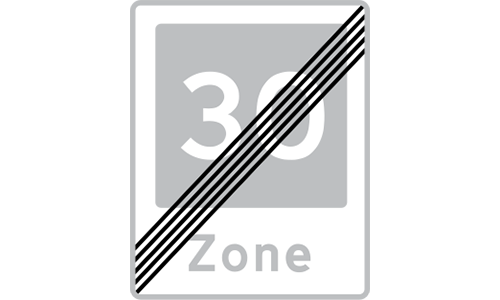
This sign marks the end of a zone with traffic calming measures. Drivers are no longer required to adhere to the reduced speeds or navigate the specific features associated with traffic calming, and general road rules and speed limits for the area now apply.
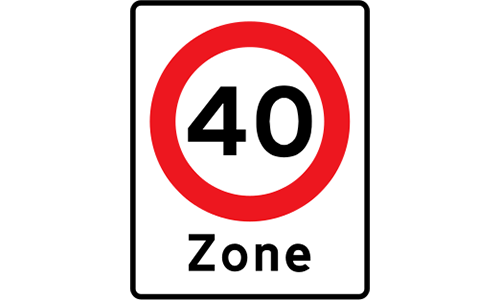
This sign indicates the beginning of a zone where a specific local speed limit (e.g., 40 km/h in this case) applies throughout the entire zone. This speed limit remains in effect for all vehicles within the zone until an End of Zone sign or another speed limit sign is encountered.
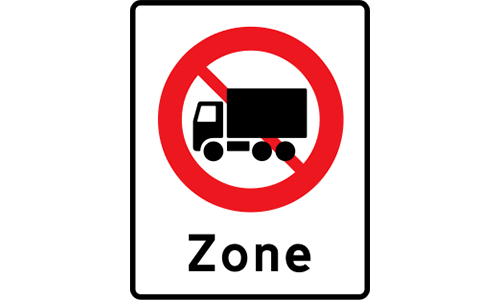
This sign indicates the beginning of a zone where heavy goods vehicles are prohibited from entering. This measure is often put in place to reduce noise, pollution, or traffic congestion in specific areas, such as residential or environmentally sensitive zones, aiming to improve local living conditions.
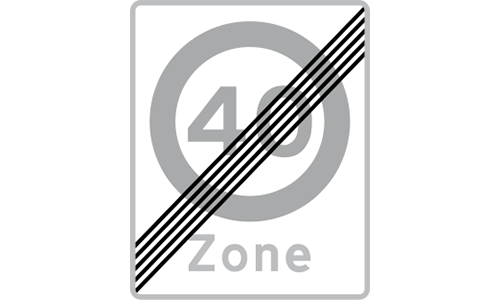
This sign indicates the end of a zone where a specific local speed limit was in effect. Upon passing this sign, the general speed limit for the road type or area will apply, unless another speed limit sign is immediately encountered, requiring drivers to adjust their speed accordingly.
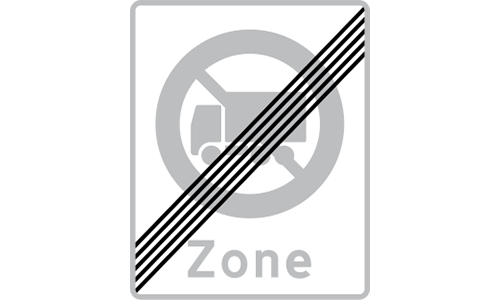
This sign marks the end of a zone where heavy goods vehicles were previously prohibited. Beyond this point, heavy goods vehicles are generally permitted to travel on the road again, unless other specific restrictions or traffic regulations are indicated by subsequent signage.
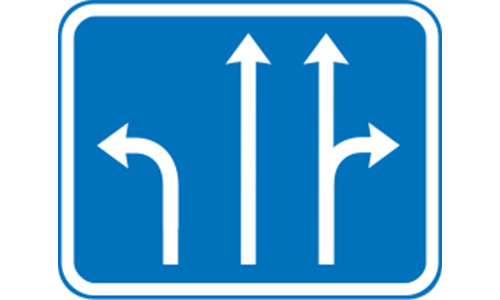
This sign provides advance information about the mandatory directions for each lane at an approaching intersection. Drivers must position their vehicles in the correct lane according to their intended direction of travel to ensure smooth and safe navigation through the junction and avoid sudden lane changes.
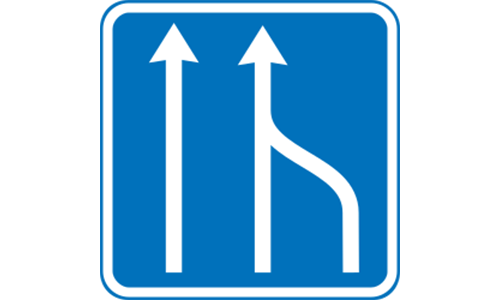
The number of lanes ahead will be reduced, requiring traffic from one of the lanes (typically the one indicated by the merging arrow) to merge into the remaining lanes. Drivers should prepare to adjust their speed and position safely, and yield to traffic already in the continuing lane.

This sign indicates that one of the existing lanes will end ahead, and drivers currently in that lane must change to an adjacent lane to continue their journey. It is crucial to signal intentions early, check blind spots, and find a safe opportunity to move into the continuing lane without impeding other traffic.
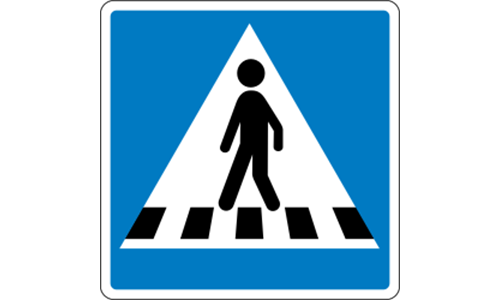
This sign indicates that there is a marked pedestrian crossing ahead. Drivers should be prepared to slow down, exercise caution, and stop if necessary to allow pedestrians to cross safely, as pedestrians usually have priority at such crossings.
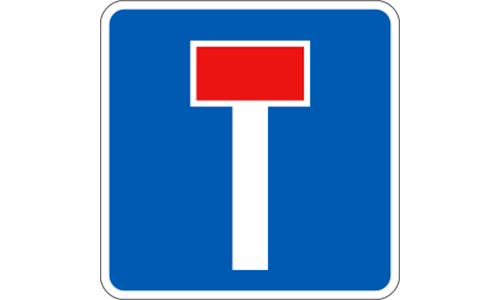
This sign indicates that the road ahead is a dead end, meaning there is no through access for vehicles. Drivers should be prepared to turn around or find an alternative route if they intended to pass through, as continuous passage is not possible.
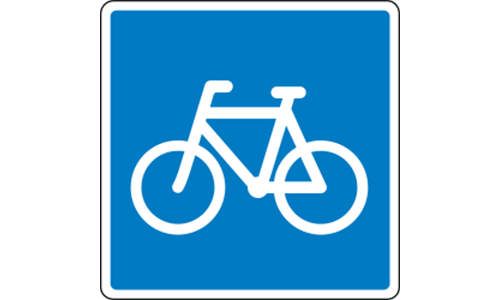
This sign indicates a recommended route for cyclists. While not always mandatory, these routes are often designed to be safer, more scenic, or more convenient for cycling, encouraging cyclists to use them for their journey.
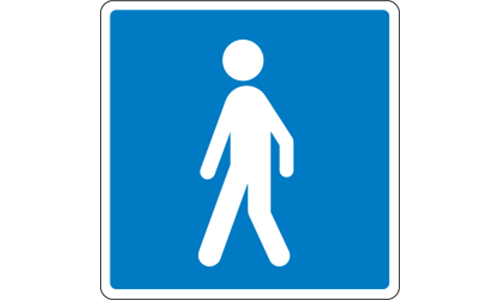
This sign indicates a recommended route for pedestrians. These routes are typically designed to be safe, accessible, and comfortable for walking, guiding pedestrians to appropriate paths away from vehicle traffic where possible.
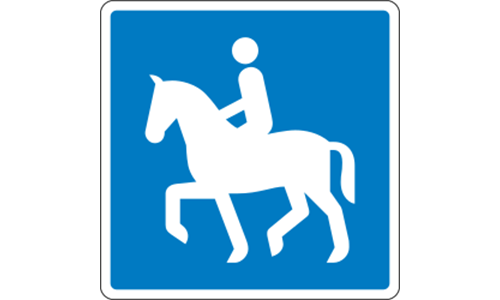
This sign indicates a recommended route specifically designated for equestrians (horse riders). While not always mandatory, these routes are often designed to be safer, more suitable, or legally designated for horses, guiding riders to appropriate paths and ensuring their safety away from general vehicle traffic.
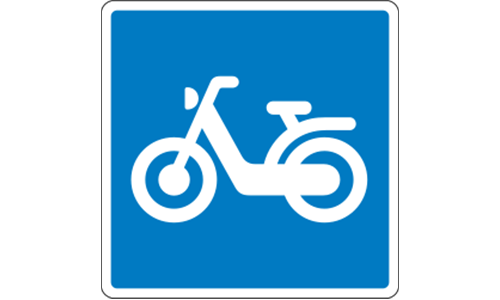
These routes are often chosen to provide safer or more efficient passage for mopeds, guiding riders along suitable roads or lanes that may be better equipped to handle moped traffic or to avoid certain congested areas.

This sign indicates a recommended route specifically designated for heavy goods vehicles. These routes are typically chosen to bypass unsuitable roads, minimize congestion, direct heavy traffic away from residential areas, or lead to specific industrial zones, optimizing traffic flow and safety.

This sign indicates a recommended route specifically designated for vehicles transporting hazardous goods. These routes are established to direct dangerous cargo away from populated areas, sensitive environments, or tunnels, enhancing public safety and minimizing risks in case of an incident.
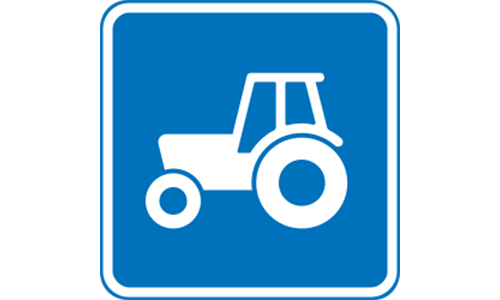
These routes are usually chosen to direct agricultural or construction vehicles along suitable roads that can accommodate their size and weight, minimizing disruption to other traffic or protecting vulnerable road surfaces.

This sign indicates a recommended route specifically designated for buses. These routes are typically part of a public transport network, guiding bus drivers along efficient and designated corridors to maintain schedules and facilitate passenger pickup and drop-off.
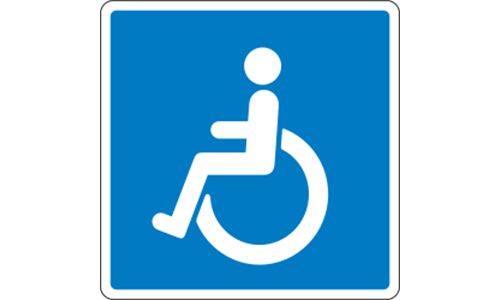
This sign provides information or instructions relevant to disabled persons, particularly those using wheelchairs. It may indicate accessible facilities, designated routes, or specific regulations designed to assist disabled individuals in navigating the environment safely and easily.
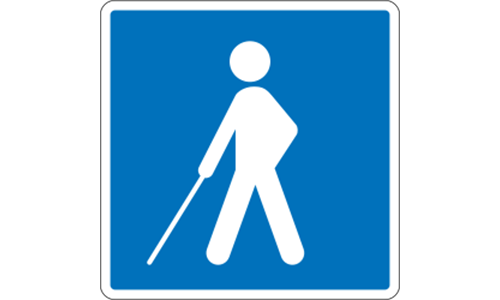
This sign provides information specifically intended for visually impaired pedestrians. It may indicate a designated crossing point, a tactile pavement area, or other facilities designed to aid safe navigation for those with impaired vision, enhancing their safety and independence.
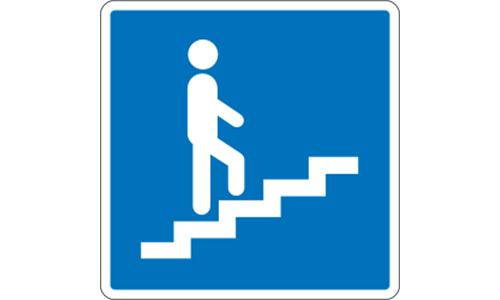
This sign indicates the presence of a pedestrian overpass, which is a bridge designed for pedestrians to cross a road or railway track safely above ground level. This separates pedestrian traffic from vehicular traffic, significantly enhancing safety and improving traffic flow.

This sign indicates the presence of a pedestrian underpass, which is a tunnel designed for pedestrians to cross a road or railway track safely below ground level. This separates pedestrian traffic from vehicular traffic, significantly enhancing safety and improving traffic flow.
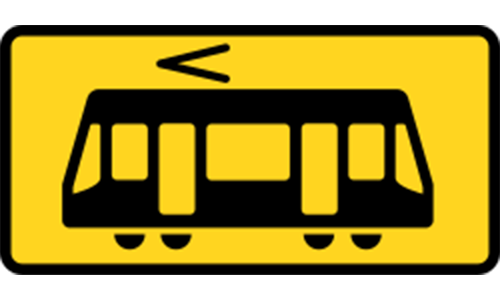
This sign indicates a designated stop for light rail transit, such as trams or streetcars. Passengers should wait at this clearly marked location to board the light rail vehicle, facilitating organized and efficient public transport use.

This sign indicates a designated stop for buses. Passengers should wait at this clearly marked location to board public buses operating on the route, ensuring orderly and efficient public transport services.

This sign designates an area specifically reserved for taxis to wait for passengers or for passengers to board taxis. Other vehicles are typically prohibited from stopping or parking in this area to ensure accessibility for taxis and maintain the flow of public transport services.
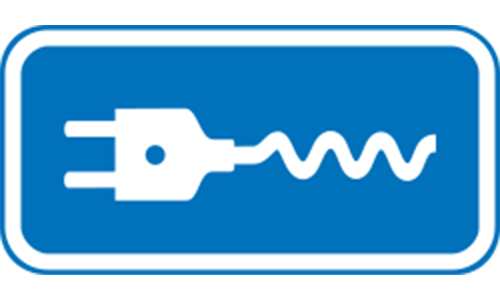
This sign indicates the location of an electric vehicle charging point. It directs drivers of electric vehicles to a facility where they can recharge their vehicles battery, promoting the use of sustainable transportation.
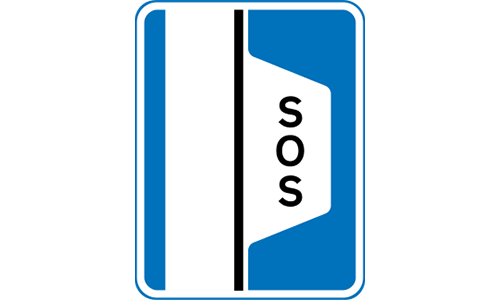
This sign indicates a breakdown bay or an emergency call point, often found on motorways or in tunnels. It directs drivers to a safe spot where they can stop in case of a breakdown and access emergency communication services, enhancing safety during unexpected vehicle issues.
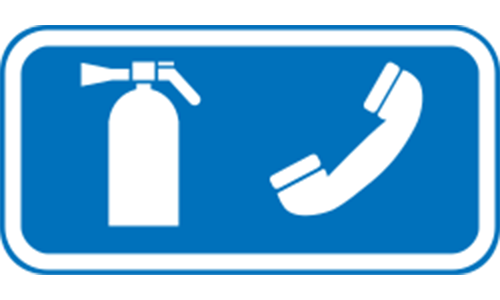
This sign indicates the availability of a fire extinguisher and an emergency phone at the specified location. These are crucial safety provisions, particularly in enclosed environments like tunnels, for use in emergencies such as vehicle fires or accidents.
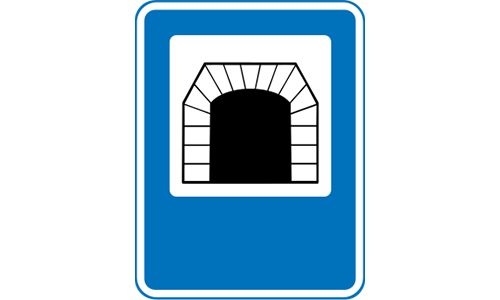
This sign indicates that you are approaching a tunnel. Drivers should be aware of specific tunnel regulations, which may include reduced speed limits, mandatory use of headlights, and restrictions on stopping or overtaking, for safety within the enclosed space.
 Pass the Exam easily with Premium Practice Tests | Unlock All with 7 Days Plan
Pass the Exam easily with Premium Practice Tests | Unlock All with 7 Days Plan  Offer Ends in
Offer Ends in 
